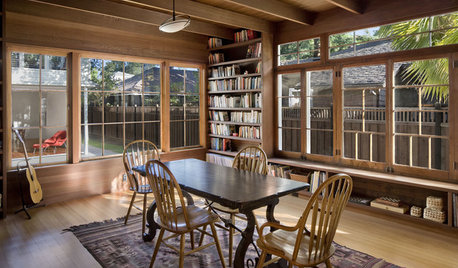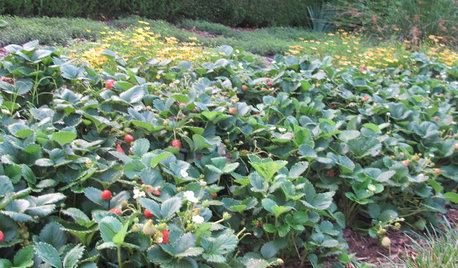The great fertilizer debate
LisaCLV
17 years ago
Related Stories

GARDENING GUIDESGet on a Composting Kick (Hello, Free Fertilizer!)
Quit shelling out for pricey substitutes that aren’t even as good. Here’s how to give your soil the best while lightening your trash load
Full Story
REMODELING GUIDESReplace vs. Restore: The Great Window Debate
Deciding what to do with windows in disrepair isn't easy. This insight on the pros and cons of window replacement or restoration can help
Full Story
KITCHEN DESIGNUsing White Marble: Hot Debate Over a Classic Beauty
Do you love perfection or patina? Here's how to see if marble's right for you
Full Story
HOUSEKEEPINGDishwasher vs. Hand-Washing Debate Finally Solved — Sort Of
Readers in 8 countries weigh in on whether an appliance saves time, water and sanity or if washing by hand is the only saving grace
Full Story
GARDENING GUIDESHow to Keep Your Citrus Trees Well Fed and Healthy
Ripe for some citrus fertilizer know-how? This mini guide will help your lemon, orange and grapefruit trees flourish
Full Story
GARDENING GUIDESHow to Switch to an Organic Landscape Plan
Ditch the chemicals for a naturally beautiful lawn and garden, using living fertilizers and other nontoxic treatments
Full Story
GARDENING GUIDESCommon Myths That May Be Hurting Your Garden
Discover the truth about fertilizer, soil, staking and more to keep your plants healthy and happy
Full Story
GARDENING GUIDES5 Prairie Wildflowers That Can Heal Your Soil
Get free, organic soil fertilizer with nitrogen-pumping plants that draw pollinators too
Full Story
REGIONAL GARDEN GUIDESSoutheast Gardener's September Checklist
Fertilize strawberries, plant a tree or two and beckon hummingbirds to your Southern garden this month
Full Story







bob740
hotdiggetydam
Related Professionals
Wrentham Landscape Architects & Landscape Designers · Benbrook Landscape Architects & Landscape Designers · Golden Landscape Contractors · Hannibal Landscape Contractors · Milton Landscape Contractors · Vashon Landscape Contractors · Madison Fence Contractors · Hammond Fence Contractors · Parkland Fence Contractors · Salt Lake City Fence Contractors · Savage Fence Contractors · Augusta Siding & Exteriors · Beaumont Siding & Exteriors · Kenosha Siding & Exteriors · Sacramento Siding & ExteriorsLisaCLVOriginal Author
hotdiggetydam
bob740
catkim
hotdiggetydam
xerophyte NYC
bambi_too
catkim
LisaCLVOriginal Author
hotdiggetydam
stitzelweller
max838
brom_phil
sander_s
LisaCLVOriginal Author
brom_phil
hotdiggetydam